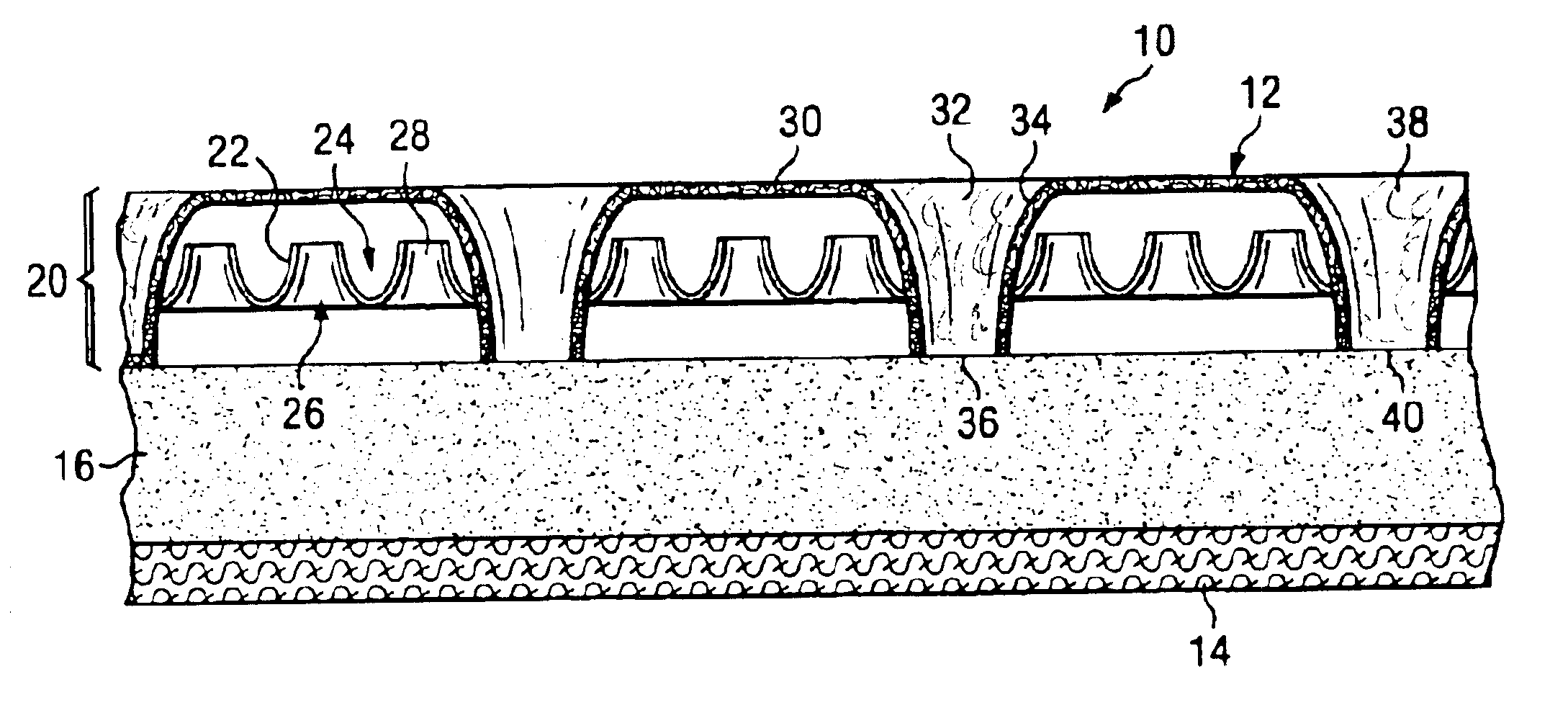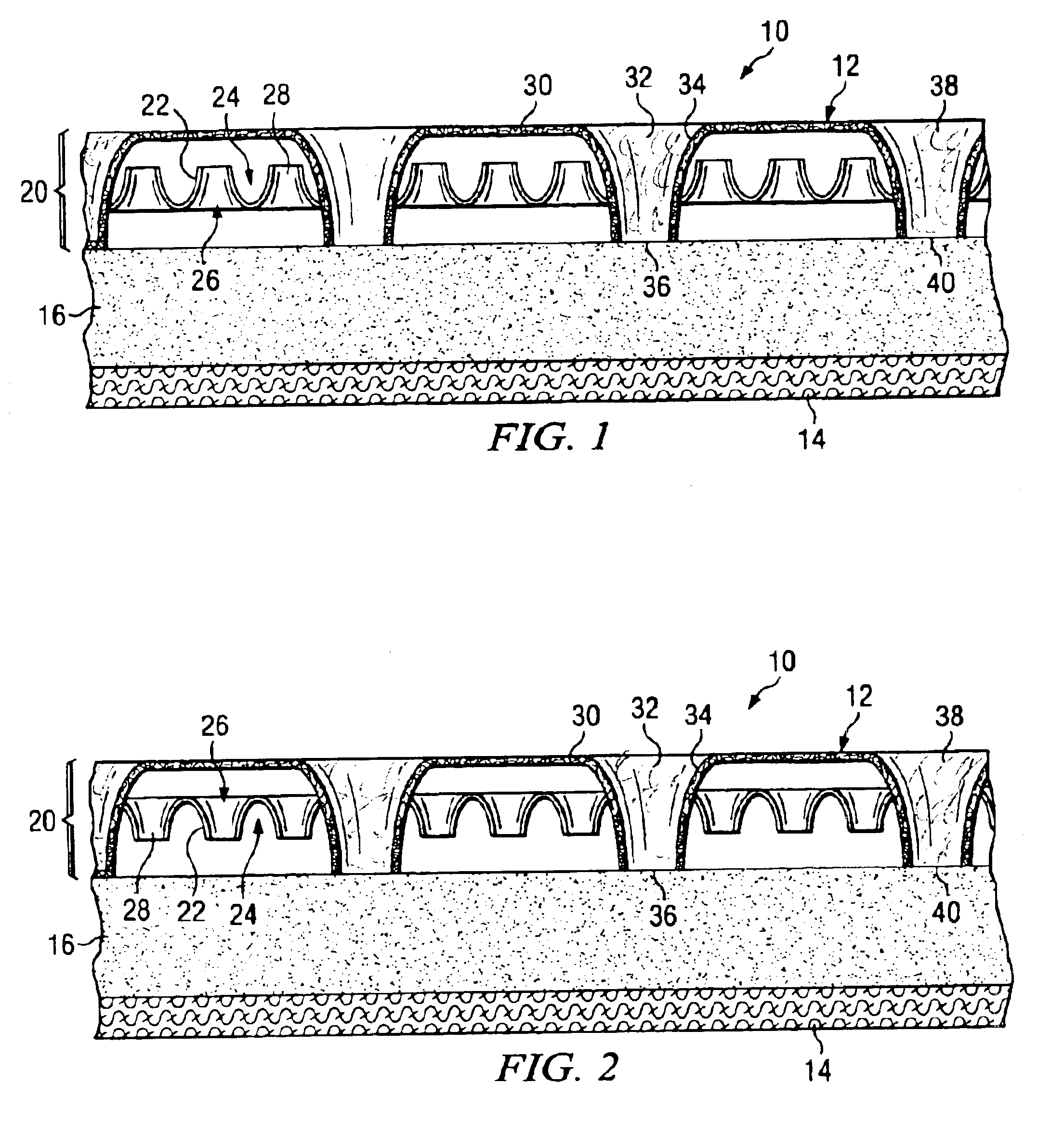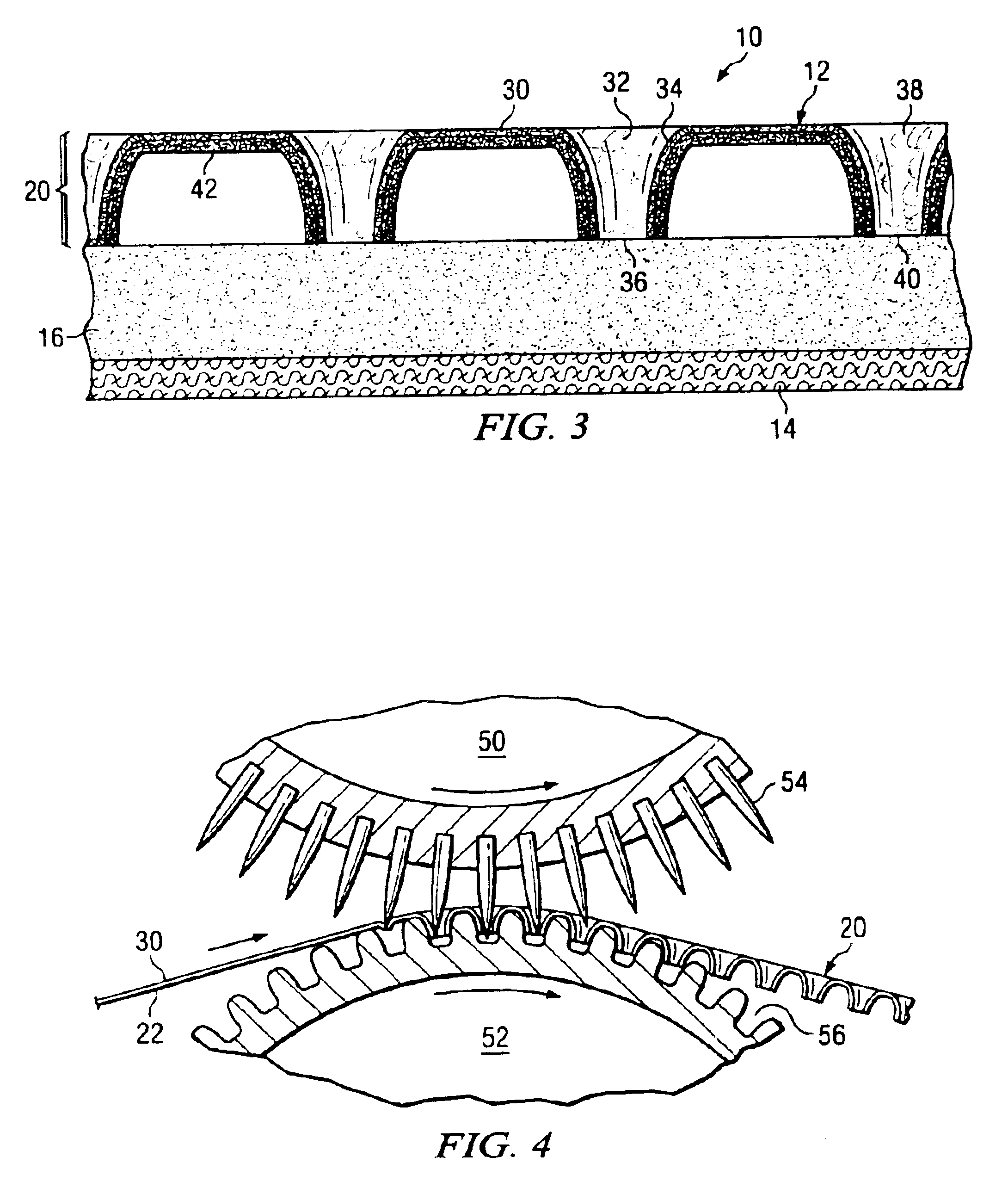Apertured nonwoven composites and method for making
a non-woven composite and aperture technology, applied in the field of non-woven composites, can solve the problems of reducing the absorbency rate of known topsheet materials, affecting the performance of topsheets with large apertures, and affecting the wearer's comfort, etc., and achieves excellent absorbency rate performance and reduces the effect of absorbency ra
- Summary
- Abstract
- Description
- Claims
- Application Information
AI Technical Summary
Benefits of technology
Problems solved by technology
Method used
Image
Examples
Embodiment Construction
Definitions
As used herein, the term “substantially” means that a given property or parameter may vary by about 20% from the stated value.
As used herein, the term “absorbent article” means articles that absorb and contain body exudates. More specifically, the term refers to articles which are placed against or in proximity to the body of a wearer for absorbing and containing various exudates discharged from the body. For example, “absorbent article”, as used herein, includes diapers, incontinent articles, sanitary napkins, pantiliners, bandages, and other articles used to absorb body exudates.
The term “diaper” refers to a garment typically worn by infants and incontinent persons that is drawn up between the legs and fastened about the waist of the wearer. Examples of diapers from the prior art include diapers described in U.S. Pat. Re. No. 26,152, issued to Duncan, et al. on Jan. 31, 1967; U.S. Pat. No. 3,860,003 issued to Buell on Jan. 14, 1975; U.S. Pat. No. 4,610,678 issued to Wei...
PUM
| Property | Measurement | Unit |
|---|---|---|
| density | aaaaa | aaaaa |
| resilient | aaaaa | aaaaa |
| hydraulic radius | aaaaa | aaaaa |
Abstract
Description
Claims
Application Information
 Login to View More
Login to View More - R&D
- Intellectual Property
- Life Sciences
- Materials
- Tech Scout
- Unparalleled Data Quality
- Higher Quality Content
- 60% Fewer Hallucinations
Browse by: Latest US Patents, China's latest patents, Technical Efficacy Thesaurus, Application Domain, Technology Topic, Popular Technical Reports.
© 2025 PatSnap. All rights reserved.Legal|Privacy policy|Modern Slavery Act Transparency Statement|Sitemap|About US| Contact US: help@patsnap.com



